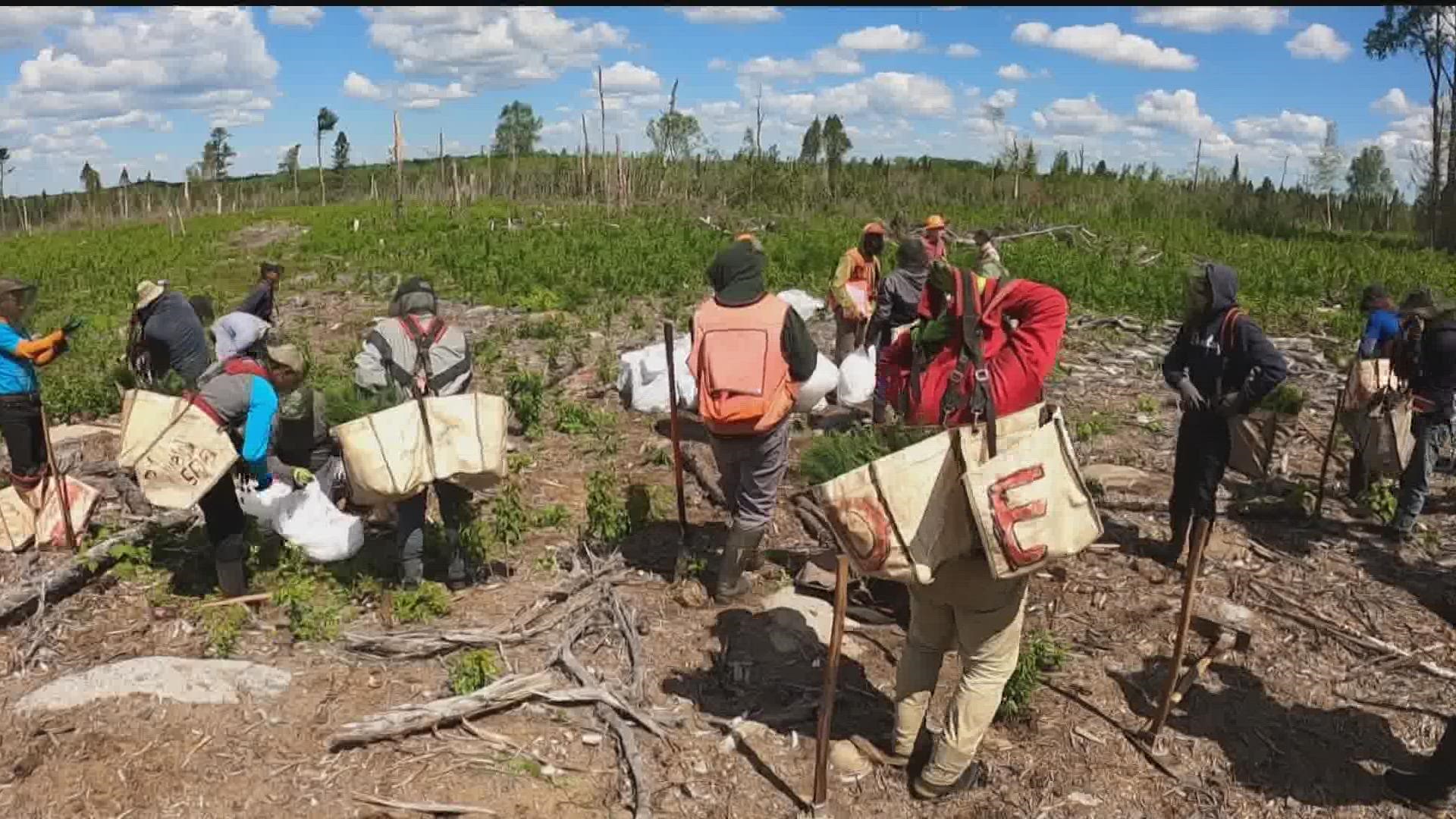ISABELLA, Minn. — For the first time, we're getting an up-close look at the damage the Greenwood Fire wrought near the North Shore last summer.
It burned so hot and so deep into the ground that foresters weren't sure if anything would grow back.
Except The Nature Conservancy recently stepped in, along with help from the Minnesota Department of Natural Resources, to make sure the forest can bounce back for generations to come.
"It’s managing our forests in a way that allows them to bounce back from threats, from stressors that come from an uncertain future with climate change or a discreet event like an insect outbreak," said The Nature Conservancy's Resiliency Forest Manager Chris Dunham.
In June, Dunham and his crews invited KARE 11 to come along as crews planted thousands of seedlings in several areas, whether hit by the wildfire, logging or a warming climate.
The Nature Conservancy is a longtime institution that's committed to protecting the planet from those pressures and this year, planted more than a million seedlings in a month across the state.
"Forests are the lungs of the planet, they filter our water that we drink, they are critical to our way of life in every way," said Dunham.
The group hires migrants workers who are hailed for their speed and strength, sometimes planting up to 2,500 trees a day - from White Spruce to Red Oak that are critical to create resilient forests.
"I don't think I've seen a fire here that's been this intense," said MN DNR Forester Anna Heruth.
Tree trunks that look like burnt matchsticks dot the landscape outside Isabella, the small town near where lightning sparked the Greenwood Fire last summer.
It was one of the largest in at least a decade, burning nearly 30,000 acres.
"Right down to the mineral soil and it exposed all these rocks and that's when I was just like, wow," said Heruth.
Heruth says her colleagues assumed few seeds survived that and immediately partnered last spring with The Nature Conservancy to get a jump start on re-planting.
"We seeded about 500 acres and this coming fall we'll seed another 400 to 500 acres," explained Heruth. "That will at least give us some assurance that we'll have trees that come back."
The plants will also help preserve the forest, that's also what's called a rare Boreal forest, the only one of its kind in Minnesota.
It's full of trees that can still handle both cold temperatures and hotter ones, as global warming persists. Dunham calls it a gradual transition to compensate for the changes and that diversity among tree varieties is important to a forest's resiliency.
"Climate change is the biggest threat these forests have seen or will see since the glaciers arrived with the last ice age; it's that big of a deal," said Dunham, whose work is also helping to save the state's streams.
He says without big trees to shade the water, it will be too warm for trout and other species.
"These streams are like the tropical rain forest of the landscape of the North Shore," says Dunham. "They're nature's highways connecting habitats from the headwaters down to the shores of Lake Superior."
His team recently planted new, more diverse trees down 100 miles of the Baptism River - nine species in all that can also withstand disease, like the spruce budworm that Dunham says will wipe out nearly all the cone-bearing conifers in the area.
Some of the new trees include Yellow Birch and White Pine that Dunham says shouldn't just be considered replacement trees. The trees are helping to rebuild Minnesota's forests into mature ones for lifetimes to come.
"For us, taking care of the forest is taking care of our grandchildren," says Dunham. "That's just the importance of the situation."
Getting trees into the ground is the beginning. While the planting season is now over, The Nature Conservancy has to ensure the seedlings survive. Crews will cut brush on over 3,000 acres this summer to prevent the previous year’s planting from becoming overgrown.
And deer especially like to munch on some of the trees. This fall, crews will staple paper “budcaps” to the tips of White Pine trees to deter deer on 7,000 acres.
And the group is always in pursuit of funding. It's currently trying to raise money to do a complete forest restoration on over 10,000 acres of public lands. If you're interested in private fundraising efforts or to see The Nature Conservancy's public funding sources, be sure to visit its website.
Watch more local news:
Watch the latest local news from the Twin Cities in our YouTube playlist:

